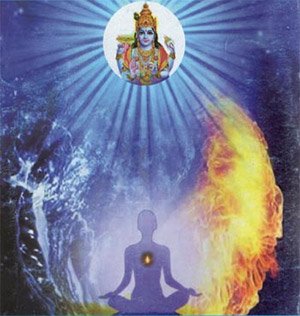Siddhanta Sangraha of Sri Sailacharya
by E. Sowmya Narayanan | 2008 | 30,562 words
This page is entitled “fundamental texts in vishistadvaita literature” contained in the Siddhanta Sangraha (English translation and critical edition). The Siddhanta Samgraha is a Sanskrit philosophical text dealing with Vishishtadvaita in five hundred Sanskrit verses. It was written by Shri Shailacarya (18th century) and closely follows the philosophy of Vedanta Deshika (13th century).
Fundamental texts in Viśistādvaita literature
1. Vedārtha Saṅgraha:
In this work Śrī Rāmānujā, who established the philosophy of Viśiṣṭādvaita, expounds his theory by quoting the relevant passages from the Vedas and the Upaniṣads. In order to establish the philosophy of Viśiṣṭādvaita the author discusses various topics pertaining to the system, giving validity not only to the Vedas and Upaniṣads, but also to the Smṛtis and Purāṇas as the source of true knowledge and refutes the views of mīmāṃsakas and other rival philosophical systems. In this work, an exposition of Viśiṣṭādvaita, the views of rival schools, criticisms against the tenets of Advaita, criticism on Bhāskara’s system, criticism on Yādavaprakāśa’s school, the explanation of tattva, hita and puruṣārtha, sources of knowledge, Supremacy of Viṣṇu, God as material and instrumental cause, criticisms on mīmāṃsa, the eternal abode or nitya vibhūti, the validity of the Vedas are explained clearly and the whole system can be understood in nutshell. This work is considered as one of the prakaraṇa granthas.
2. Nītimālā:
Nārāyaṇarya (12th century A.D) is the author of the Nītimālā. He has condensed Jaimini’s mīmāṃsa sūtras and has written another set of sūtras to reconcile some of the mutually contradicting sūtras of Jaimini.
3. Rāmānuja Siddhānta Saṅgraha:
This work is based on the conclusions arrived at by Śrī Rāmānuja in his works. This treatise gives an account of the principles of Viśiṣṭādvaita. This has been written by Śrī Raṅgarāmānujācārya, who was popularly known as Upaniṣadbhāṣyakāra.
4. Yatīndramata Dīpikā:
This work was written by Śrīnivāsadāsa (17th century A.D) was the son of Govindācārya of Tirupati. This explains the basic tenets of the Viśiṣṭādvaita in a lucid style. This work is one of the most favourable works among the students of Viśiṣṭādvaita. It is also known as the Śārīraka Paribhāṣā and is one of the prakaraṇa granthas for understanding the basic principles of Viśiṣṭādvaita. It contains an analysis of the important principles of the Viśiṣṭādvaita system in ten chapters. The author follows the Nyāya Siddhañjana of Vedānta Deśika in presenting the important tenets of this system.
5. Vedāntakārikāvalī:
This work has been written by Surapuram Bucci Veṅkaṭācārya, who was the son of Annārya of Śrī Śaila family. It has been composed in a poetic style with around 200 verses narrating the accepted principles of Viśiṣṭādvaita Siddhānta. The author was supposed to be lived in Bukkapattinam. He was honoured by Veṅkaṭānāyaka, who was the then Nijam ruler of Gulbarga district. He belongs to the beginning of 19th century. This book has been commentated in Sanskrit and translated in English by Pandit V. Krishnamacarya.
6. Sampradāya Sudhā:
This great work has been presented to us by Shri Viraraghavacariyar, who was popularly known as Madurantakam Swami. Here, the author describes the ten important principles, which are supported by our system. The author was an erudite scholar who has clearly expounded the theories of Viśiṣṭādvaita based on the works and the commentaries of Śrī Vedānta Deśika.
Conclusion:
 This concludes Fundamental texts in Vishistadvaita literature according to Vishishtadvaita philosophy explained by Shri Shailacarya. This book follows the model of Vedanta Deshika although the Vishishta Advaita school was originally expounded by Shri Ramanuja. Vishishta-Advaita is one of the various sub-schools of Vedanta which itself represents one of the six orthodox schools of Hindu Philosophy. They highlight the importance of the Upanishads, the Bhagavad Gita and the Brahma Sutras.
This concludes Fundamental texts in Vishistadvaita literature according to Vishishtadvaita philosophy explained by Shri Shailacarya. This book follows the model of Vedanta Deshika although the Vishishta Advaita school was originally expounded by Shri Ramanuja. Vishishta-Advaita is one of the various sub-schools of Vedanta which itself represents one of the six orthodox schools of Hindu Philosophy. They highlight the importance of the Upanishads, the Bhagavad Gita and the Brahma Sutras.
